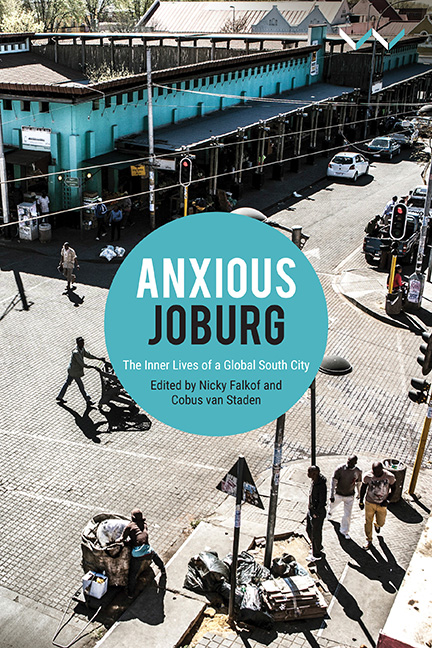Book contents
5 - Ugly Noo-Noos and Suburban Nightmares
Published online by Cambridge University Press: 16 June 2021
Summary
While our language about cities generalises them, makes them comparable with other cities, able to circulate as part of urban (or sociological or cultural) discourse, cities themselves are unique. They are unparaphrasable … They have more in common with poetic than literal language, with literature than information. – Lindsay Bremner, Writing the City into Being (2010, 44)
When I think about my childhood in suburban Johannesburg in the 1980s, I encounter a discomfortingly nostalgic mishmash of pastel colours and swimming pools, long summers of men braaiing and women in kitchens, the ubiquitous presence of my family’s domestic worker and her children, who felt like cousins except that they lived in a room outside the back of our house. I remember the parks where white children played on swings and black women chatted and fanned themselves on benches. I remember television: crowding around to watch a blonde Afrikaans contestant take the Miss World competition or trying to sync up the radio simulcast so that we could watch Dallas in English. I remember the vague sense of apprehension and the shuttered awareness that I lived in a place where violence happened but only ‘over there’, somewhere else that was never specified but was lurking in the quiet conversations of adults and the news reports that I wasn’t allowed to watch. I remember the warnings we were given at school about being vigilant and the looming awareness that the world – or rather our world – was fragile in ways that I could not understand.
But overall, my childhood was haunted by a far more potent and visible foe than the liberation fighters who stalked the nightmares of white voters. The monster of my youth was not the ANC terrorist or Angolan communist whom we were warned about. I did not fear stories of the murderous urges of ‘maids’ and ‘garden boys’. Rather, I was haunted by a more tangible demon: Libanasidus vittatus, the African king cricket, tusked king cricket or, to give it its most common South African designation, the Parktown prawn.
The Parktown prawn, its colloquial name derived from a suburb of Johannesburg, is an astonishing creature. It is one of the largest naturally occurring invertebrates in the region and can grow up to six or seven centimetres. It ranges in colour from pale yellow and white-flesh pink to brown to glossy red.
- Type
- Chapter
- Information
- Anxious JoburgThe Inner Lives of a Global South City, pp. 115 - 131Publisher: Wits University PressPrint publication year: 2020



